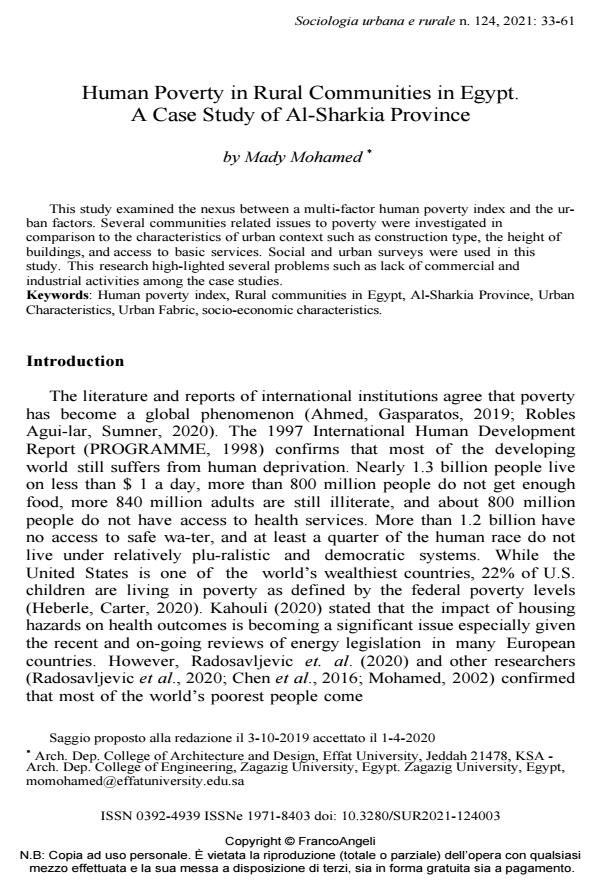Human Poverty in Rural Communities in Egypt. A Case Study of Al-Sharkia Province
Titolo Rivista SOCIOLOGIA URBANA E RURALE
Autori/Curatori Mady Mohamed
Anno di pubblicazione 2021 Fascicolo 2021/124
Lingua Inglese Numero pagine 29 P. 33-61 Dimensione file 568 KB
DOI 10.3280/SUR2021-124003
Il DOI è il codice a barre della proprietà intellettuale: per saperne di più
clicca qui
Qui sotto puoi vedere in anteprima la prima pagina di questo articolo.
Se questo articolo ti interessa, lo puoi acquistare (e scaricare in formato pdf) seguendo le facili indicazioni per acquistare il download credit. Acquista Download Credits per scaricare questo Articolo in formato PDF

FrancoAngeli è membro della Publishers International Linking Association, Inc (PILA)associazione indipendente e non profit per facilitare (attraverso i servizi tecnologici implementati da CrossRef.org) l’accesso degli studiosi ai contenuti digitali nelle pubblicazioni professionali e scientifiche
This study examined the nexus between a multi-factor human poverty index and the ur-ban factors. Several communities related issues to poverty were investigated in comparison to the characteristics of urban context such as construction type, the height of buildings, and ac-cess to basic services. Social and urban surveys were used in this study. This research high-lighted several problems such as lack of commercial and industrial activities among the case studies.
In questo studio è stata esaminata la relazione tra l'indice di povertà umana multifattoriale e i fattori urbani. Sono state indagate diverse questioni relative alla povertà delle comunità rispetto alle caratteristiche del contesto urbano, come il tipo di costruzione, l'altezza degli edifici e l'accesso ai servizi di base. Per questo studio sono state utilizzate indagini sociali e urbane. La ricerca ha evidenziato diversi problemi come la mancanza di attività commerciali e industriali tra i casi studio
Parole chiave:Indice di povertà umana, comunità rurali in Egitto, provincia di Al-Sharkia, caratteristiche urbane, tessuto urbano, caratteristiche socio-economiche.
- Engineering Solutions Toward Sustainable Development Shaimaa R. Nosier, Nancy M. Badawy, pp.593 (ISBN:978-3-031-46490-4)
- Cities of the Future Amani Ahmad Aburuzaiza, Mady Mohamed, Tarek Saad Ragab, pp.209 (ISBN:978-3-031-15459-1)
Mady Mohamed, Human Poverty in Rural Communities in Egypt. A Case Study of Al-Sharkia Province in "SOCIOLOGIA URBANA E RURALE" 124/2021, pp 33-61, DOI: 10.3280/SUR2021-124003